World Patient Safety Day 2023
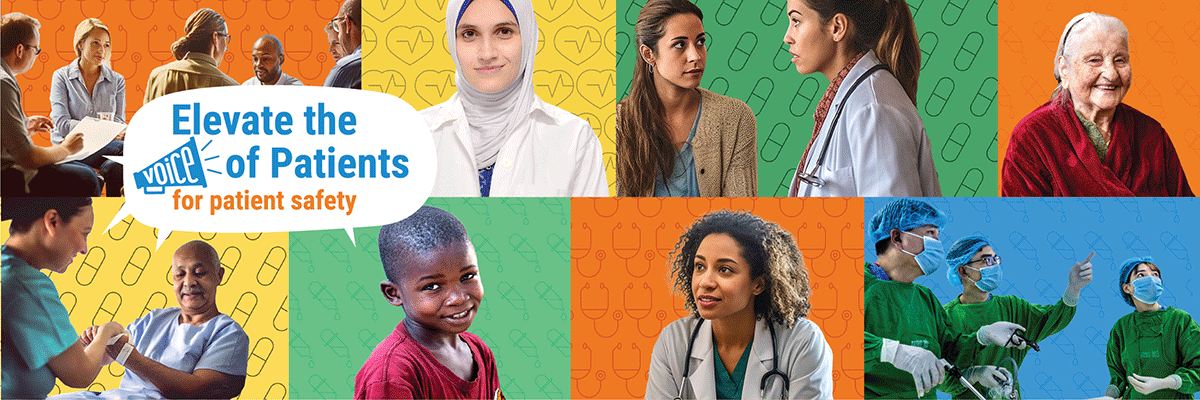
For the fifth year running, WHO marks World Patient Safety Day on 17 September. “Engaging patients for patient safety” is the theme of this year’s global campaign, which seeks to elevate patients’ voices.
World Patient Safety Day not only aims to enhance global understanding of patient safety. It also promotes global solidarity and action to achieve WHO’s vision of a world in which no one is harmed in health care, and every patient receives safe and respectful care – every time, everywhere.
As explained by Dr Ahmed Al-Mandhari, WHO Regional Director for the Eastern Mediterranean:
Every year, large numbers of patients are harmed or die because of unsafe health care, especially in low- and middle-income countries, including in countries of the Eastern Mediterranean Region. It is now evident that harm can be reduced if patient engagement strategies and interventions are put in place.
Campaign objectives
- Raise global awareness of the need to actively engage patients and their families and caregivers, in all settings and at all levels of health care, to improve patient safety.
- Involve policy-makers, health care leaders and personnel, patients’ organizations, civil society and others in efforts to engage patients and families in the policies and practices for safe health care.
- Empower patients and families to be actively involved in their own health care and in the improvement of health care safety.
- Advocate for urgent action, by all partners, on patient and family engagement in line with the “Global patient safety action plan 2021–2030”.
Why engage patients?

Meaningful patient engagement could reduce the burden of harm by 15%, saving billions of dollars annually (1). Patient engagement and health literacy can affect care outcomes and the rate and severity of patient harm. Engaged patients have been found to experience 17% fewer adverse events (1).
In fragile, conflict-affected and vulnerable settings, engaging patients and families is even more crucial. This is because it helps to identify the diverse needs of affected populations and the most vulnerable groups, including women, older people and people with disabilities (2).
Regional context
More than half of the countries and territories in the Eastern Mediterranean Region have grappled in recent years with emergencies of varying degrees – from acute to protracted emergencies.
WHO endorses a strategy of involving patients, families and communities in the planning, delivery and assessment of high-quality health care services in the Region. This ensures that action planning is rooted in addressing the population’s most urgent concerns (3).
What you can do
On World Patient Safety Day 2023, WHO calls for patients, families and communities to be actively involved in their care process. This call also extends to the health workforce: it’s time to shift perspective to see patients as partners in health, not just recipients of care.
Other entities can light up iconic monuments in orange and organize events and other activities on and around 17 September 2023. Governments, nongovernmental organizations, professional organizations, civil society, patients’ organizations, academia and research institutes are all urged to join in the World Patient Safety Day campaign.
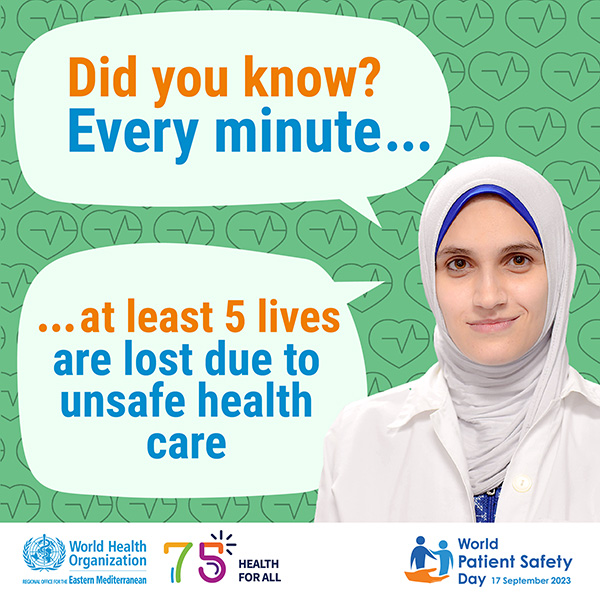
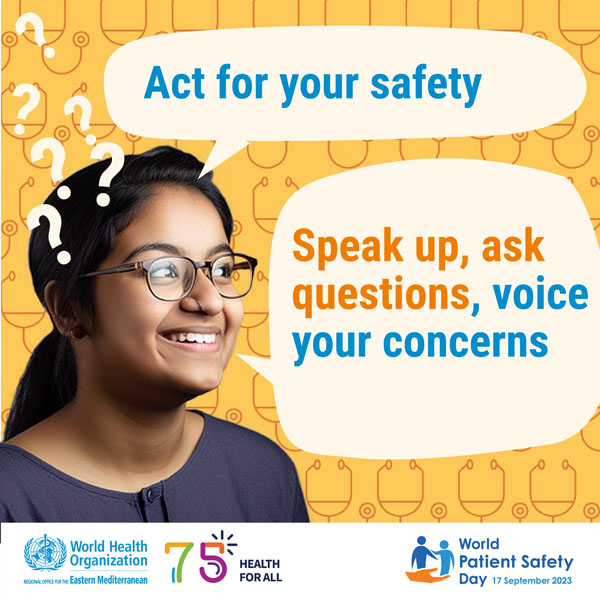
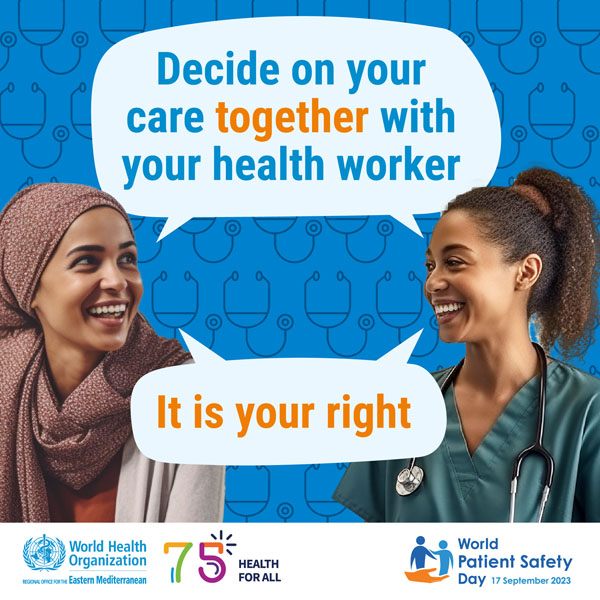
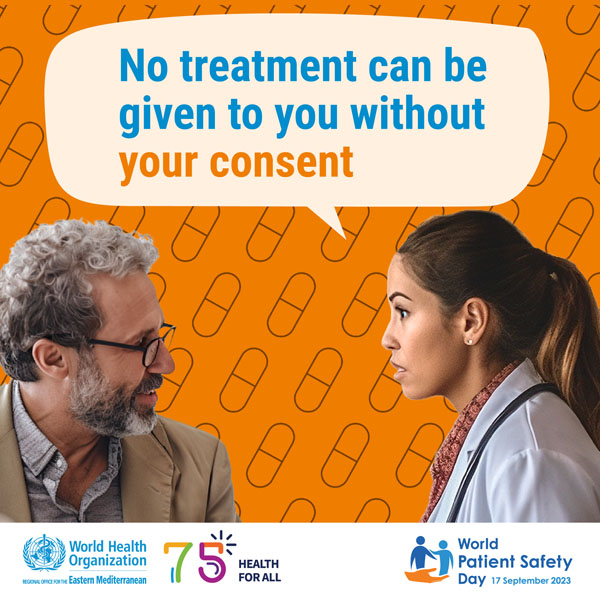
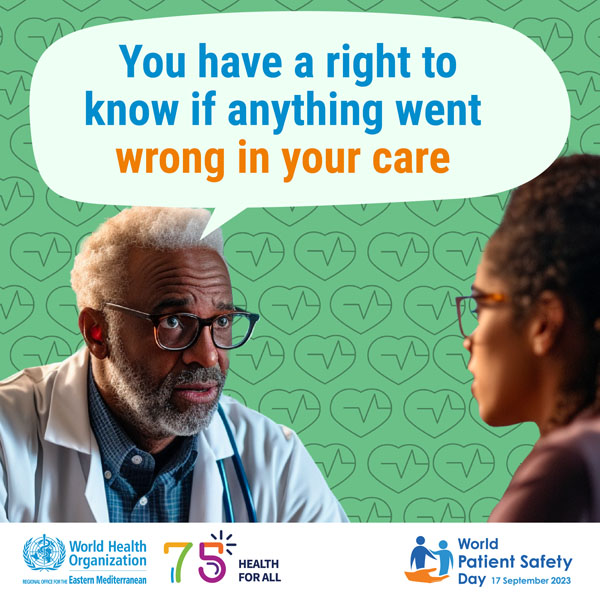
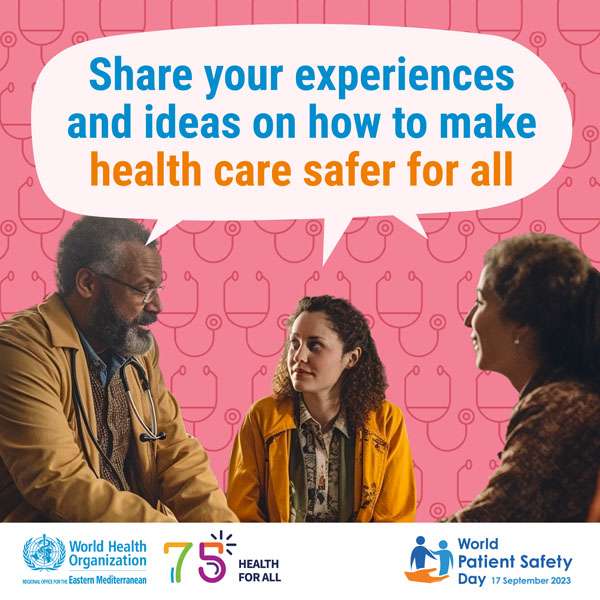

Related links
Introducing the patient safety friendly hospital framework
Patient safety assessment manual for hospitals
Patient safety assessment manual for primary care
Global patient safety action plan 2021–2030
Framework on integrated, people-centred health services
- The economics of patient safety in primary and ambulatory care: flying blind.
Slawomirski L, Auraaen A, Klazinga N. Paris: Organisation for Economic Co-operation and Development; 2018. - Quality of care in humanitarian settings.
World Health Organization/Health Emergencies/Global Health Cluster Quality Improvement Task Team; 2020. - Quality of care in fragile, conflict-affected and vulnerable settings: taking action.
Geneva: World Health Organization; 2020.


